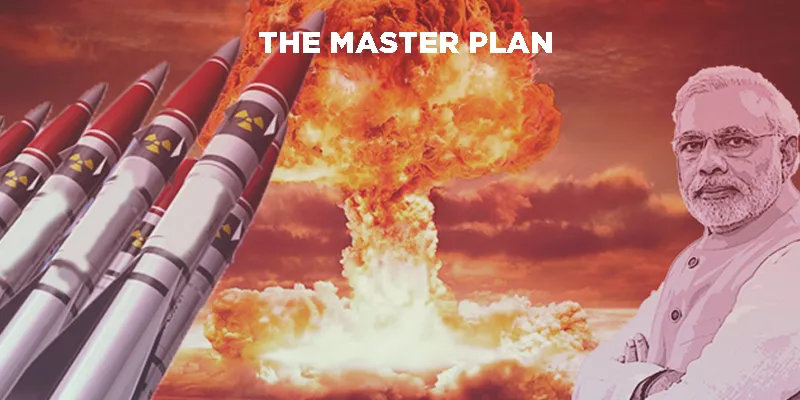11 ways in which PM Modi plans to promote a digital, cashless economy
Prime Minister Narendra Modi's master plan to handle the after-effects of the demonetisation is much like an onion -- many-layered and occasionally tear-inducing. From choking the parallel economy to pushing cashless transactions, the move has created ripples that will not die down anytime soon.
In the aftermath of the cancellation of the legal tender character of old Rs 500 and Rs 1,000 notes, there has been a surge in the digital transactions through use of credit/debit cards and mobile phone applications/e-wallets etc. To further accelerate this process, the Central Government has today announced a package of incentives and measures for promotion of digital and cashless economy in the country.
According to a release by Ministry of Finance, the incentives/measures are as following:

- The Central Government Petroleum PSUs shall give incentive by offering a discount at the rate of 0.75% of the sale price to consumers on purchase of petrol/diesel if payment is made through digital means.Nearly 4.5 crore customers buy petrol or diesel at such petrol pumps per day who can take benefit of this incentive scheme. It is estimated that petrol/diesel worth Rs.1800 crore is sold per day to the customers out of which nearly 20% was being paid through digital means. In the month of November 2016 it has increased to 40% and the cash transaction of Rs.360 crore per day have got shifted to cashless transaction methods. The incentive scheme has the potential of shifting at least 30% more customer to digital means which will further reduce the cash requirement of nearly Rs. 2 lakh crore per year at the petrol pumps.
- To expand digital payment infrastructure in rural areas, the Central Government through NABARD will extend financial support to eligible banks for deployment of 2 POS devices each in 1 Lakh villages with population of less than 10,000. These POS machines are intended to be deployed at primary cooperative societies/milk societies/agricultural input dealers to facilitate agri-related transactions through digital means.This will benefit farmers of one lakh village covering a total population of nearly 75 crore who will have facility to transact cashlessly in their villages for their agri needs.
- The Central Government through NABARD will also support Rural Regional Banks and Cooperative Banks to issue “Rupay Kisan Cards” to 4.32 crore Kisan Credit Card holders to enable them to make digital transactions at POS machines/Micro ATMs/ATMs.
- Railway through its sub urban railway network shall provide incentive by way of discount upto 0.5% to customers for monthly or seasonal tickets from January 1, 2017, if payment is made through digital means.Nearly 80 lakh passengers use seasonal or monthly ticket on suburban railways, largely in cash, spending worth nearly Rs.2,000 crore per year. As more and more passengers will shift to digital means the cash requirement may get reduced by Rs.1,000 crore per year in near future.
- All railway passengers buying online ticket shall be given free accidental insurance cover of upto Rs. 10 lakh.Nearly 14 lakh railway passengers are buying tickets everyday out of which 58% tickets are bought online through digital means. It is expected that another 20% passengers may shift to digital payment methods of buying railway tickets. Hence nearly 11 lakh passengers per day will be covered under the accidental insurance scheme.
- For paid services e.g. catering, accommodation, retiring rooms etc. being offered by railways through its affiliated entities/corporations to the passengers, it will provide a discount of 5% for payment of these services through digital means.All the passengers travelling on railways availing these services may avail the benefit.
- Public sector insurance companies will provide incentive, by way of discount or credit, upto 10% of the premium in general insurance policies and 8% in new life policies of Life Insurance Corporation sold through the customer portals, in case payment is made through digital means.
- The Central Government Departments and Central Public Sector Undertakings will ensure that transactions fee/MDR charges associated with payment through digital means shall not be passed on to the consumers and all such expenses shall be borne by them. State Governments are being advised that the State Governments and its organizations should also consider to absorb the transaction fee/MDR charges related to digital payment to them and consumer should not be asked to bear it.
- Public sector banks are advised that merchant should not be required to pay more than Rs. 100 per month as monthly rental for PoS terminals/Micro ATMs/mobile POS from the merchants to bring small merchant on board the digital payment eco system.Nearly 6.5 lakh machines by Public Sector Banks have been issued to merchants who will be benefitted by the lower rentals and promote digital transactions. With lower rentals, more merchants will install such machines and promote digital transactions.
- No service tax will be charged on digital transaction charges/MDR for transactions upto Rs.2000 per transaction.
- For the payment of toll at Toll Plazas on National Highways using RFID card/Fast Tags, a discount of 10% will be available to users in the year 2016-17.
What do you think of these steps? How will they improve the current situation? Let us know in the comments below.







